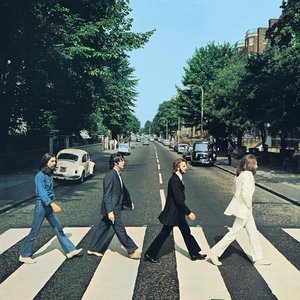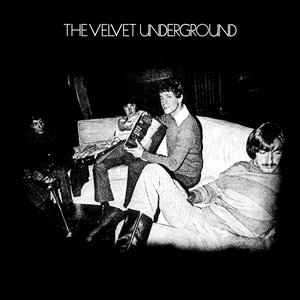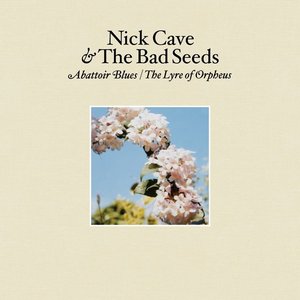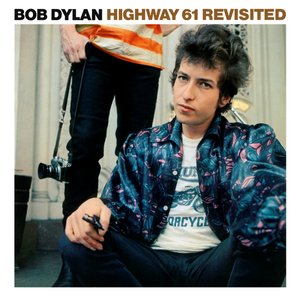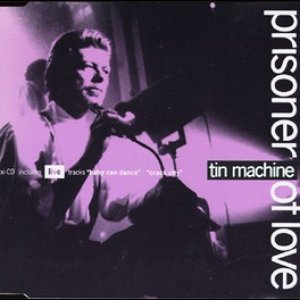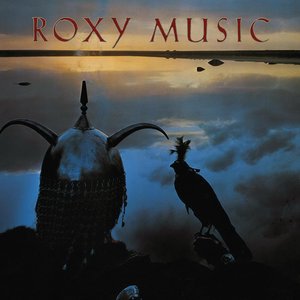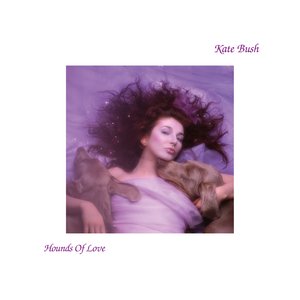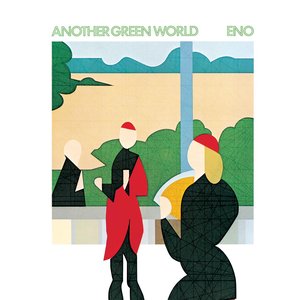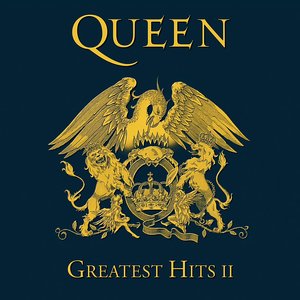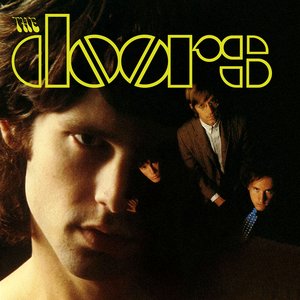Wiki
-
Release Date
3 December 2015
-
Length
10 tracks
Aladdin Sane is the sixth studio album by the English musician David Bowie, released on 13 April 1973 through RCA Records. The follow-up to his breakthrough The Rise and Fall of Ziggy Stardust and the Spiders from Mars, it was the first album he wrote and released from a position of stardom. It was co-produced by Bowie and Ken Scott and features contributions from Bowie's backing band the Spiders from Mars — Mick Ronson, Trevor Bolder and Mick Woodmansey — with pianist Mike Garson, two saxophonists and three backing vocalists. Recorded in London and New York City between legs of the Ziggy Stardust Tour, the record was Bowie's final album with the full Spiders lineup.
Most of the tracks were written on the road in the US and are greatly influenced by America and Bowie's perceptions of the country. Due to the American influence and the fast-paced songwriting, the record features a tougher, heavier glam rock sound than its predecessor. The lyrics reflect the pros of Bowie's newfound stardom and the cons of touring and contain images of urban decay, drugs, sex, violence and death. Some of the songs are influenced by the Rolling Stones; a cover of their song "Let's Spend the Night Together" is included. Bowie described the album's title character, a pun on "A Lad Insane", as "Ziggy Stardust goes to America". The cover artwork, shot by Brian Duffy and featuring a lightning bolt across Bowie's face, was the most expensive cover ever made at the time and is regarded as one of his most iconic images.
Accompanied by the UK top five singles "The Jean Genie" and "Drive-In Saturday", Aladdin Sane was Bowie's most commercially successful record up to that point, topping the UK Albums Chart and garnering immense popularity for the artist there. It also received positive reviews from music critics, although many found it inferior to its predecessor. The popularity continued throughout the latter half of the Ziggy Stardust Tour, which featured various setlist and stage production changes. In later decades, Aladdin Sane has appeared on several best-of lists and is viewed as one of his essential releases. It has been reissued several times and was remastered in 2013 for its 40th anniversary, which was included on the 2015 box set Five Years (1969–1973).
Background and writing
David Bowie launched to stardom in early July 1972 through the release of his fifth studio album The Rise and Fall of Ziggy Stardust and the Spiders from Mars and his performance of "Starman" on BBC's Top of the Pops. He promoted the record through the Ziggy Stardust Tour in the United Kingdom and the United States, writing new songs on the road that would appear on his next album.
Aladdin Sane was the first album Bowie wrote and released from a position of stardom. Writing new material on the US leg of the tour in late 1972, many of the tracks were influenced by America and his perceptions of the country. Biographer Christopher Sandford believes the album showed that Bowie "was simultaneously appalled and fixated by America". The tour, combined with other side projects during the period, such as co-producing Lou Reed's Transformer and mixing the Stooges' Raw Power, took a toll on Bowie's mental health, further influencing his writing. Due to being on the road, Bowie was unsure of the new album's direction, believing he had wanted to say about Ziggy Stardust, but knew he would "end up doing…'Ziggy Part 2'". He stated: "There was a point in '73 where I knew it was all over. I didn't want to be trapped in this Ziggy character all my life. And I guess what I was doing on Aladdin Sane, I was trying to move into the next area – but using a rather pale imitation of Ziggy as a secondary device. In my mind, it was Ziggy Goes to Washington: Ziggy under the influence of America."
Rather than continue the Ziggy Stardust character directly, Bowie decided to create a new persona, Aladdin Sane, who reflected the theme of "Ziggy goes to America" and, according to Bowie, was less defined and "clear cut" than Ziggy, and "pretty ephemeral". According to biographer David Buckley, the character was a "schizoid amalgamation" that was reflected in the music.
Title and artwork
The title is a pun on "A Lad Insane", which at one point was expected to be the title. When writing the album during the tour, it was under the working title Love Aladdin Vein, which Bowie said at the time felt right, but decided to change it partly due to its drug connotations.
The cover artwork features a shirtless Bowie with red hair and a red-and-blue lightning bolt splitting his face in two while a teardrop runs down his collarbone. It was shot in January 1973 by Brian Duffy in his north London studio. In an effort to ensure RCA promoted the album extensively, Defries was determined to make the cover as costly as possible. He insisted on an unprecedented seven-colour system, rather than the usual four. The image was the most expensive cover art ever made at the time. The make-up designer was artist Pierre Laroche, who remained Bowie's make-up artist for the remainder of the 1973 tour and the Pin Ups cover shoot. Cann writes that Duffy and Laroche copied the lightning bolt from a National Panasonic rice-cooker in the studio. The make-up was completed with a "deathly purple wash", which Cann believes, together with Bowie's closed eyes, evoke a "death mask". The final photo was selected from a group featuring Bowie looking directly at the camera. These photos later became a signature image of the V&A's David Bowie Is exhibition. The shoot was the only time Bowie wore the design on his face, but it was later used for hanging backdrops at live performances.
Duffy believed that Bowie's inspiration for the "flash" design came from a ring once worn by Elvis Presley; it featured the letters TCB (an acronym for Taking Care of Business) with a lightning flash. Pegg believes the cover has a deeper meaning, representing the "split down the middle" personality of the Aladdin Sane character and reflecting Bowie's split feelings regarding the US tour and his newfound stardom. The teardrop on his chest was Duffy's idea; Bowie said the photographer "just popped it in there. I thought it was rather sweet." It was airbrushed by Philip Castle, who also helped create the silvery effect on Bowie's body on the sleeve. Regarded as one of the most iconic images of Bowie, it was called "the Mona Lisa of album covers" by The Guardian's Mick McCann and one of the 50 greatest album covers of all time by Billboard in 2022. Pegg calls it "perhaps the most celebrated image of Bowie's long career".
Upon release, the cover was polarising. According to Cann, some were offended and bewildered at Bowie's appearance, while others found it daring. Henry Edwards of The New York Times initially described the image as "the most cunning representation to date of this angel‐faced, 25‐year‐old, English composer‐performer as a disembodied spirit of the Space Age". In retrospect, Cann argues that a cover like Aladdin Sane's can be a risky move for artists whose success is relatively recent.
Reissues
Aladdin Sane has been reissued several times. Although the original 1973 vinyl release featured a gatefold cover, some later LP versions such as RCA's 1980 US reissue presented the album in a standard non-gatefold sleeve. The album was first released on CD in 1984 by RCA. In 1990, Dr. Toby Mountain at Northeastern Digital, Southborough, Massachusetts, remastered Aladdin Sane from the original master tapes for Rykodisc, released with no bonus tracks. It was again remastered in 1999 by Peter Mew at Abbey Road Studios for EMI and Virgin Records, and once more released with no bonus tracks.
In 2003, a two-disc version was released by EMI/Virgin. The second in a series of 30th Anniversary 2CD Edition sets (along with Ziggy Stardust and Diamond Dogs), this release includes a remastered version of the album on the first disc. The second disc contains ten tracks, a few of which had been previously released on the 1989 collection Sound + Vision. A 40th anniversary edition, remastered by Ray Staff at London's AIR Studios, was released in CD and digital download formats in April 2013. This 2013 remaster of the album was included in the 2015 box set Five Years 1969–1973 and rereleased separately, in 2015–2016, in CD, vinyl and digital formats. A 12" limited edition of the 2013 remaster, pressed in silver vinyl, was released in 2018 to mark the 45th anniversary of the album. To celebrate its 50th anniversary, the album was reissued on 14 April 2023 in vinyl picture disc and half-speed-mastered versions.
Album descriptions on Last.fm are editable by everyone. Feel free to contribute!
All user-contributed text on this page is available under the Creative Commons Attribution-ShareAlike License; additional terms may apply.

